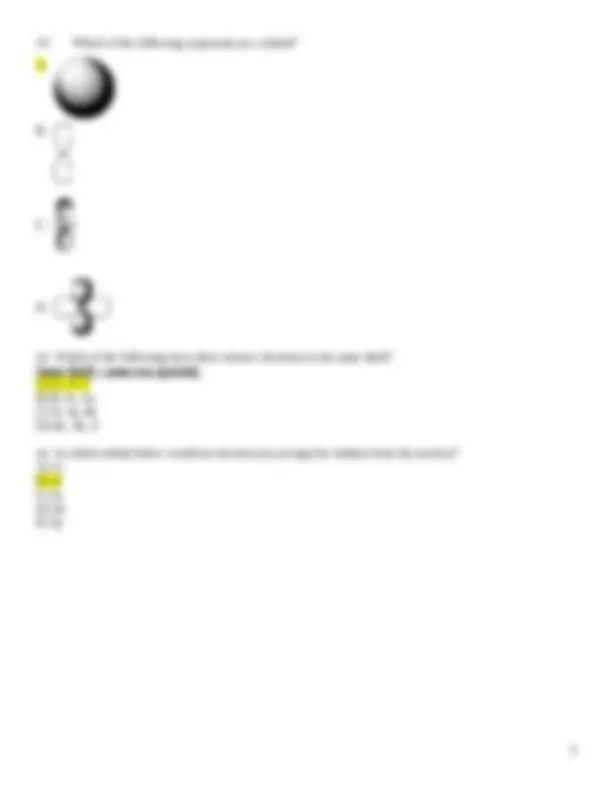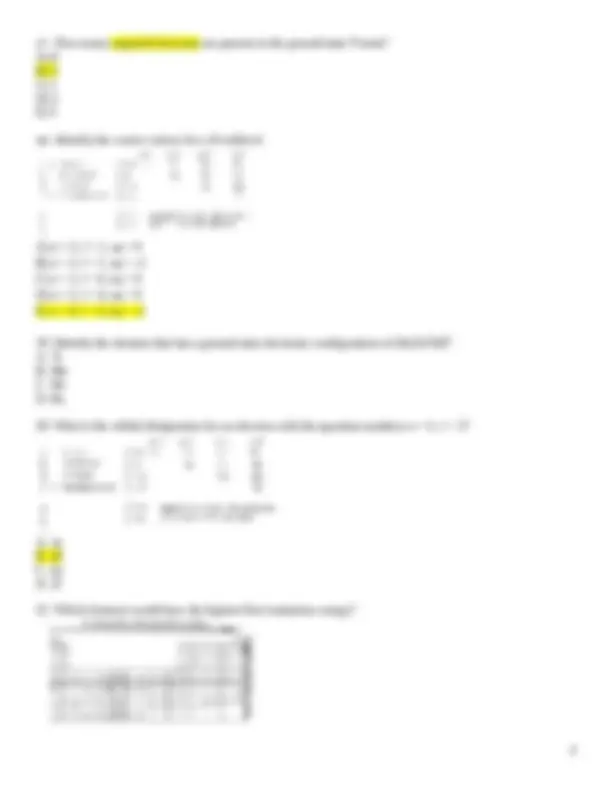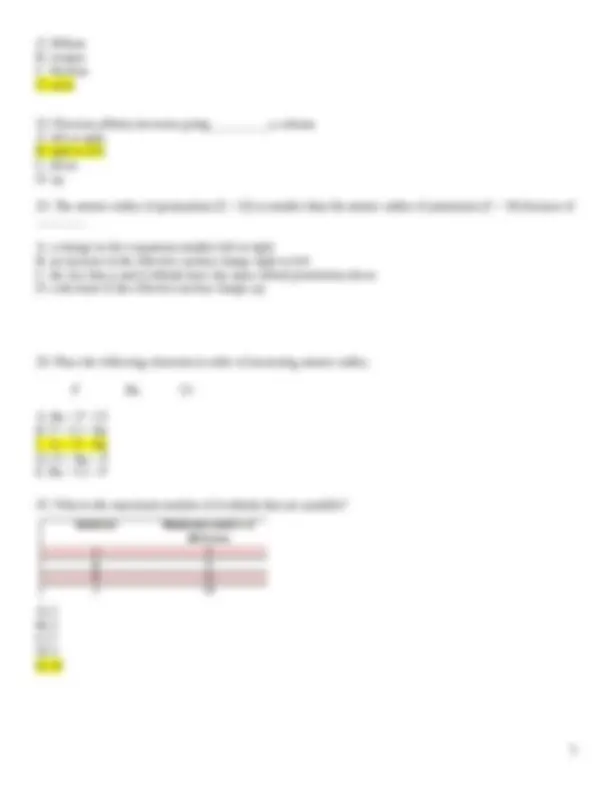





Study with the several resources on Docsity

Earn points by helping other students or get them with a premium plan


Prepare for your exams
Study with the several resources on Docsity

Earn points to download
Earn points by helping other students or get them with a premium plan
Community
Ask the community for help and clear up your study doubts
Discover the best universities in your country according to Docsity users
Free resources
Download our free guides on studying techniques, anxiety management strategies, and thesis advice from Docsity tutors
Chemistry 101 Exam 3 Pre-Test Material Type: Notes; Class: Chem I Sci Maj; Subject: Chemistry; University: Baton Rouge Community College; Term: Spring 2016;
Typology: Study notes
1 / 6

This page cannot be seen from the preview
Don't miss anything!




CHEM101 PRE-TEST #3 (Chapters 5,6,7 & 8)
Multiple Choice: Read each question and all of the choices. Select the BEST answer for each question and
mark your answer on your scantron. (4 points each)
o
C at an unknown volume. When the sample is heated to a
temperature of 74.
o
C, its volume increases to 4.57 L. What was its initial volume?
unknown depth. If the volume of the air in the syringe at this depth is 7.5 mL, what is the new pressure?
A. 2.13 atm B. 0.469 atm C. 16.0 atm D. 4.09 atm E. 5.25 atm
are contained in a 5.00 L tank at 428 K and 2.80 atm?
refrigerator and placed outside on the patio on a sunny day, what difference would you see after a couple of
minutes, AND whose law would this enforce?
A. deflate, Charles’ B. inflate, Charles’ C. deflate, Boyle’s D. inflate, Boyle’s
A.Boyle’s B. Charles’ C. Avogadro’s D. Ideal E. Combined gas
A. 22.4 L B. 22.4 mL C. 224 L D. 0.224 mL E. 0.0224 mL
A. Avogadro's Law
B. Ideal Gas Law
C. Charles's Law
D. Boyle's Law
E. Dalton's Law
the halogen?
A. Br 2
C. Cl 2
E. Ge
= - 95 J?
A. The system is gaining 95 J, while the surroundings are losing 95 J.
B. The system is losing 95 J, while the surroundings are gaining 95 J.
C. Both the system and the surroundings are gaining 95 J.
D. Both the system and the surroundings are losing 95 J.
E. None of the above are true.
A. the freezing of water
B. the combustion of propane
C. a hot cup of coffee (system) cools on a countertop
D. the chemical reaction in a "hot pack" often used to treat sore muscles
E. the vaporization of rubbing alcohol
A. the formation of dew in the morning
B.the melting of ice
C. the chemical reaction in a "cold pack" often used to treat injuries
D. the vaporization of water
E. None of the above are exothermic.
A. 1s
B. 4f
C. 3s
D. 3d
E. 2p
A) n = 3, l = 1, m l
B) n = 2, l = 1, m l
C) n = 1, l = 0, m l
D) n = 2, l = 0, m l
E) n = 4, l = 3, m l
4d
A. Tc
B. Mn
C. Nb
D. Ru
A. 3s
B. 3d
C. 2p
D. 2f
A. lithium
B. oxygen
C. fluorine
D. neon
A. left to right
B. right to left
C. down
D. up
A. a change in the n quantum number.left to right
B. an increase in the effective nuclear charge.right to left
C. the fact that p and d orbitals have the same orbital penetration.down
D. a decrease in the effective nuclear charge.up
P Ba Cl
A. Ba < P < Cl
B. P < Cl < Ba
C. Cl < P < Ba
D. Cl < Ba < P
E. Ba < Cl < P